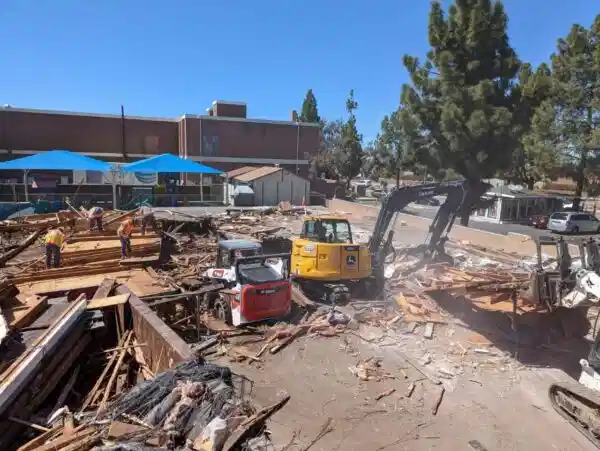Demolition is a complex process that involves the careful deconstruction of structures, and it is a crucial component in urban development and renovation projects. The types of demolition used can vary significantly based on several factors, including the type of structure involved, the project’s objectives, and safety considerations. Understanding these different types of demolition is essential for choosing the right method to achieve your project goals effectively and safely.
Understanding demolition
At its core, demolition involves the dismantling or destroying of buildings and other structures to make way for new developments or to eliminate unsafe structures. The process is not as straightforward as merely tearing down walls; it requires meticulous planning and execution to ensure safety and efficiency. Different types of demolition are classified based on the techniques employed to bring down or dismantle a structure, with each method serving specific types of demolition requirements for buildings or project aims.
Types of demolition
1.- Manual Demolition
Manual demolition, also known as hand demolition, involves the use of handheld tools such as sledgehammers, crowbars, and jackhammers. This method is typically employed for smaller structures or when precision is necessary, such as in selective demolition projects. Manual demolition allows for greater control over the process, making it ideal for projects where parts of a building need to be preserved or where damage to surrounding areas must be minimized.
2.- Mechanical demolition
Mechanical demolition utilizes heavy machinery like excavators, bulldozers, and wrecking balls to dismantle structures. This is one of the most common types of demolition for larger buildings. Mechanical demolition is efficient and allows for processing larger debris more quickly compared to manual methods. The selection of equipment varies based on the structure’s size and construction materials. While this method is fast and effective, it requires careful planning to ensure safety and minimize environmental impact.
3.- Controlled demolition
Controlled demolition involves a highly calculated approach, often using machinery in a way that carefully manages the collapse of a structure. This technique is used when there is a need to demolish a structure in a densely populated area where space is limited, and safety is a top priority. Controlled demolition minimizes the risk of debris spreading to surrounding areas and is executed with precision to ensure the utmost safety. Among the types of demolition, controlled demolition stands out for its precision and safety.
4.- Demolition by explosives
Also known as implosion, demolition by explosives is a precise method where controlled explosives are strategically placed to bring down a structure in a predetermined manner. This method is typically used for tall, large structures like skyscrapers and chimneys. Implosion requires expert knowledge to execute safely as it involves significant risks. It is the fastest demolition method, effectively bringing down a structure within seconds, but requires months of planning to ensure all safety protocols are in place.
5.- Selective demolition
Selective demolition, or deconstruction, focuses on carefully removing specific parts of a building while preserving the rest. This method is often used in renovation projects where only part of a structure needs altering. Selective demolition is essential for reducing waste and recycling materials, aligning with sustainable building practices. Through careful planning, materials such as wood, steel, and concrete can be reused in other projects, promoting environmental responsibility. This is one of the types of demolition that significantly supports green building initiatives.
Choosing the right demolition method
The type of demolition method selected depends on various factors including the structure’s size, material composition, location, and the project’s overarching goals. For instance, urban redevelopment projects in dense areas may favor controlled or selective demolition methods to preserve nearby structures. Meanwhile, mechanical demolition might be preferred for larger, isolated buildings due to its efficiency. The project’s budget, timeline, and environmental considerations will also play significant roles in the decision-making process.
Partner with experts for your demolition needs
When it comes to tackling demolition projects, expertise and precision are paramount. Buendía Demolition offers comprehensive demolition services in San Diego, tailored to meet the unique needs of your project. Our skilled team provides industry-leading solutions designed to execute every demolition safely and efficiently. Trust us to manage your demolition project from start to finish with professionalism and care, ensuring a seamless transformation of any site.
Contact Buendía Demolition today to discuss the demolition for your next project. Let us bring our expertise to your demolition needs, offering solutions that prioritize safety, efficiency, and environmental responsibility.

